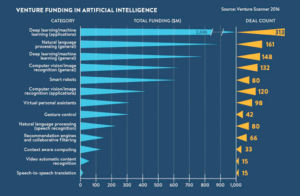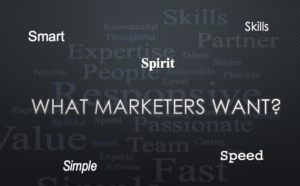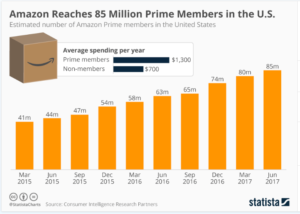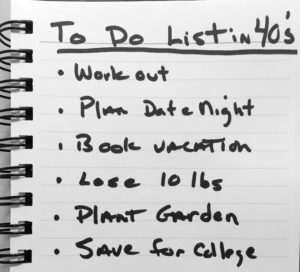We are in a “Digital Revolution” as futurist Ray Kurweil stated in a recent interview. With machine learning, artificial intelligence (AI), and cognitive computing enabling everything from Apple’s new IPhone X to autonomous driving vehicles, it’s hard not to talk about the technology. And considering the herculean effort to construct and configure the tools, it’s hard to fault them for doing so.
Unlike the latest wave of technology innovators like Uber and NetFlix who disrupted industries and business models, this “Forth Industrial Revolution” brings with it a healthy dose of personal disruption. From robots to artificial intelligence, it has the potential to impact everything from how we work to how we live our daily lives. And with that comes some very real concerns about the future and our privacy.
Futurists like Stephen Hawkins and Marc Andreessen have helped give the media fuel for the fire. In an interview with the BBC, Hawkins warned that the development of “full AI could spell the end of the human race.” Andreessen has been quoted as saying that in the future there will be two types of jobs: “people who tell computers what to do and people who are told by computers what to do.”

In fact, the technologies receiving the highest amount of investment are those that are focused on making machines more “human.” According to Venture Scanner, deep learning, natural language processing and image recognition make up the top three funding categories within AI. Kurweil believes that we are only 11 years away from passing the “Turing Test,” the measure that determines if humans can detect the difference between a human or a machine.
Unfortunately, what may get lost in the noise is the great potential of this new generation of technologies. Autonomous vehicles are predicted to save 30,000 lives a year from traffic accidents. Robots are being programmed to help give the disabled more independence. Advancement in the diagnosis and treatment of certain types of cancer are already being seen and some believe that AI could lead to the end of cancer within our lifetime.
Why isn’t the focus on the benefits of these new technologies rather than on the concerns? Professor Theodore Levitt, a former professor at Harvard Business School in the 60’s may have the answer. Levitt was a thought leader in sales and marketing but may best known for the phrase “People don’t want to buy a quarter-inch drill; they want a quarter-inch hole.” The abridged version “Sell the hole, not the drill” has been uttered by sales managers for decades and it’s particularly relevant for the latest wave of new technologies.
We’re in the early stages of this “revolution” so much of the talk is about the “drill.” Explaining the process of building the “drill” is necessary for audiences like investors or partners. It’s also aimed at potential users/customers in hopes they will be able to define the holes to be drilled. The tricky part for marketers is that there are parts of the drill that have the real potential to threaten or scare audiences.
This is the tightrope technology marketers are going to have to walk for the foreseeable future. In order to develop the apps (the “holes”) marketers need to find and convert early adopters. The messaging that appeals to that audience may put others on high alert. It’s a classic “Crossing the Chasm” challenge as described by Geoffrey Moore.
Early adaptors, as described by Moore are comfortable with risk. Unfortunately, when things go wrong, like Google’s DeepMind experience with UK’s National Health Services where their initial work on mobile apps was found to have violated the UK’s patient privacy laws, it makes the “Chasm” grow between the early adopters and the early majority.
Here’s the learning for marketers, one of the four characteristics of visionaries that alienate pragmatists (Early Majority) is the overall disruptiveness of the technology. To be successful in building a bridge over the “Chasm” you may need to tone down your “disruptive” messages. Build a roadmap that gently walks them over the bridge step by step, given them reassurance along the way.
We also know from CEB/Gartner that buyers make purchase decisions based on personal value they perceive. To market “human-like” technologies to humans you have to understand their fears, concerns, and behaviors. Just because your technology can do something as well as or better than a human…doesn’t mean you need to actually “say it.”

 This is the view from my standup desk. On some days, I stare out the window at Regan National and fantasize about flying off to an exotic location as a result of the wide success of the new business. On other days, I think about getting on a plane and running away from it all. That pretty sums up my first 30 days. Ping-ponging between extreme highs and lows, and never feeling like I’m going fast enough.
This is the view from my standup desk. On some days, I stare out the window at Regan National and fantasize about flying off to an exotic location as a result of the wide success of the new business. On other days, I think about getting on a plane and running away from it all. That pretty sums up my first 30 days. Ping-ponging between extreme highs and lows, and never feeling like I’m going fast enough. We’ve tried surveys, but they say one thing and then do another. One on one sessions, yep, tried those as well. How do we really know what our clients want? Over the last few months, I’ve had the opportunity to speak with close to fifty marketers, friends, clients and former colleagues. I didn’t have an agenda or a pitch, just a conversation about their career path and how they decided on their professions.
We’ve tried surveys, but they say one thing and then do another. One on one sessions, yep, tried those as well. How do we really know what our clients want? Over the last few months, I’ve had the opportunity to speak with close to fifty marketers, friends, clients and former colleagues. I didn’t have an agenda or a pitch, just a conversation about their career path and how they decided on their professions. Something odd happened the other day on my morning run. Deciding to ramp up my training, I grabbed my Garmin GPS watch and headed out. The goal was to track my pace at various points on my usual route and that’s when I noticed a strange trend. At first, I thought my watch needed a software update because something really unusual was happening.
Something odd happened the other day on my morning run. Deciding to ramp up my training, I grabbed my Garmin GPS watch and headed out. The goal was to track my pace at various points on my usual route and that’s when I noticed a strange trend. At first, I thought my watch needed a software update because something really unusual was happening.
 We’ve all had those trips. An important business meeting takes you to a new city, perhaps on your bucket list, and all you see is the airport, skyline and a conference room. Here are some thoughts on how to get the most out of your business trip in 5 popular cities.
We’ve all had those trips. An important business meeting takes you to a new city, perhaps on your bucket list, and all you see is the airport, skyline and a conference room. Here are some thoughts on how to get the most out of your business trip in 5 popular cities. There is a grocery store a few miles from my house. It’s small and older, at least thirty years in its current location. Usually, the shelves are poorly stocked with a limited selection compared to the newer stores surrounding it. Despite these facts, the store manages to stay in business which is somewhat hard to comprehend given the cut throat, low margin nature of the industry. It survives because it has a secret weapon.
There is a grocery store a few miles from my house. It’s small and older, at least thirty years in its current location. Usually, the shelves are poorly stocked with a limited selection compared to the newer stores surrounding it. Despite these facts, the store manages to stay in business which is somewhat hard to comprehend given the cut throat, low margin nature of the industry. It survives because it has a secret weapon. f what you needed (information, insight, etc.) to execute you then got into the market, letting the results refine your program and thus quickly course correcting. Built on the idea of the yield curve, the greatest gains in progress were made during the first 70% of effort, refining the remaining 30% being too costly and time consuming.
f what you needed (information, insight, etc.) to execute you then got into the market, letting the results refine your program and thus quickly course correcting. Built on the idea of the yield curve, the greatest gains in progress were made during the first 70% of effort, refining the remaining 30% being too costly and time consuming. nal to pull your hand away from heat originate? If your answer is the brain, you’ve already been burned. Instinctively, we pull our hand back without conscious thought, because the response to the stimulus takes a short cut and originates in the spinal cord because of the need for quick action.
nal to pull your hand away from heat originate? If your answer is the brain, you’ve already been burned. Instinctively, we pull our hand back without conscious thought, because the response to the stimulus takes a short cut and originates in the spinal cord because of the need for quick action. I posted this on LInkedIn last month. Surprised by the response, so I thought I’d share it here.
I posted this on LInkedIn last month. Surprised by the response, so I thought I’d share it here.